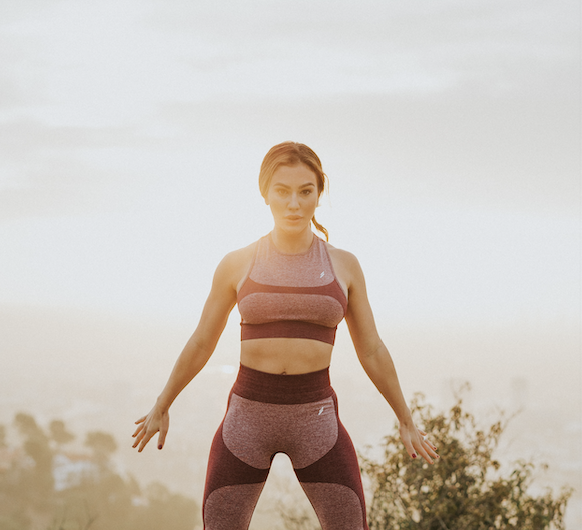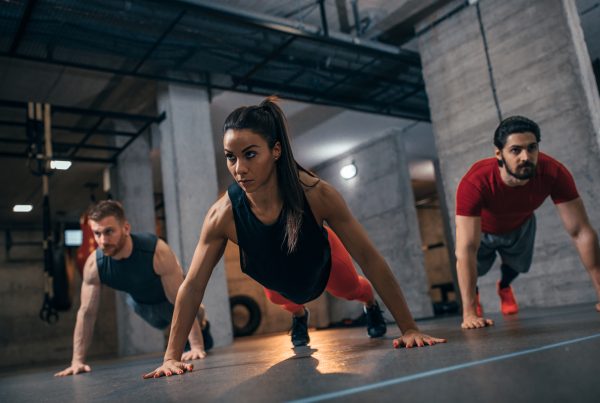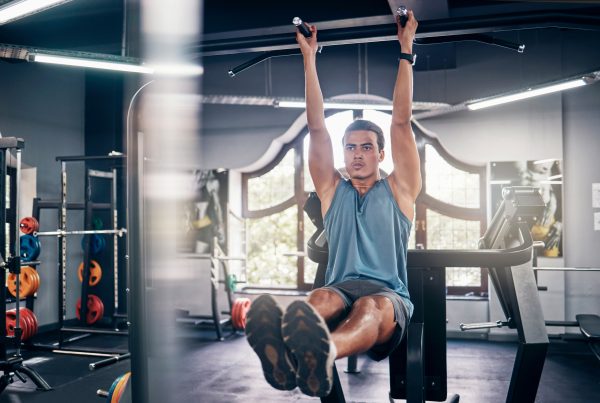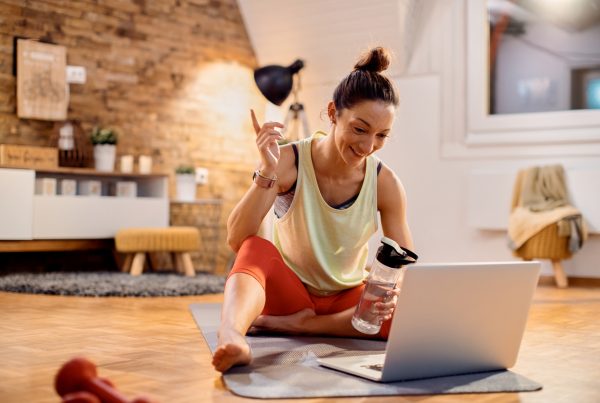After Ally’s hugely successful Movement Mastery piece on the squat we had to ask her to take a deep dive into something that is always top of your list. So over to Ally to get right-to-the-core of the… core (see what we did there?).
She has included three videos stacked full of gems to train your core for life – check them out below.
‘No man is an island, entire of itself, every man is a piece of the continent, a part of the main.’ John Donne
This famous literary quote from the 17th century author John Donne has the meaning that no one is self-sufficient and everyone requires contact and interaction with others in order to thrive. Indeed, in an isolated state man will do badly. Although this relates to humans as a social, economic, physical and psychological being, we can actually apply this concept to our physical bodies… and yes, our core.
No muscle is an island, but a part of a wider continent, each a part of the main and working best when interacting in an integrated way as we move, whether moving from point A to point B or for a task such as dancing, running or lifting weights in the gym.
Ab Day? Or core for life?
For many years traditional gym work has broken the body up into zones or individual muscles, you’ll train your legs, your biceps, your abs, your arms… you might even break your training up into leg day, push day, pull day etc… But when we move in life, whether for sport, household chores, playing with children it is rare that we differentiate our body into individual areas or muscles, so why do we persist in training it in this way?
Over the last 10-15 years or so as our understanding of the body and its connective tissue systems have created an evolution in programming in some camps. We have seen a welcome shift to more whole-body training utilising non-traditional movements and equipment which stress the body in less linear ways and even allow more odd position training – they are nearly always inclusive of a more whole-body approach. I don’t like to call specific equipment or a specific exercise functional, because it’s how you use a piece of equipment or create an exercise that makes it functional or not. A functional exercise is only functional when it helps a person move in a way which replicates the skills they need for their sport, or a task in life.
Let’s think of a baseball pitcher needing more range of motion in his back and hips and power to decelerate and accelerate in his core so that they can throw the ball a long way multiple times during a game. We will need their exercise prescription to include rotation with opposite side lateral flexion into rapid power acceleration. Equipment such as medicine balls, RIP trainers, bands, ViPRs, slam balls, wall balls would all be great tools to use with this person for variability, we can use all of them in some great ways to rotate, flex, perform explosive power, decelerate etc… to create an experience close to pitching. An exercise which wouldn’t be functional for this person would be a plank as it doesn’t replicate the movement, the energy system or the intensity required by the body. This is what functional means.
Can you think of any movement in sport or life where you are only using your abs and not integrating your legs and/or arms too? Your core muscles, which we are going to say include everything from the shoulders down to below the pelvis, hardly ever function alone. They are not an island. Your core muscles act as a force transfer centre between the lower and upper body. They are a conduit for power and load and this is how we need to work them… to be strong, powerful and dynamic in function.
Floor Stability
For many years core work has been taught on the floor in static supine or prone positions. We even have whole disciplines and classes dedicated to it and floor work is prescribed for back pain and many other conditions on the promise that ‘it increases our core strength, our core stability and this is good for our backs and will reduce pain’. Multiple studies have actually disproved this though with disciplines such as Pilates and Yoga doing no more for pain relief in chronic and acute low back pain patients, than any other form of exercise. When we look at studies on exercise for back pain, no one type outperforms any other in any clinically meaningful way, meaning the persons enjoyment of it and ability to be consistent are likely the most important factors in pain reduction… not whether they can do a perfect birddog!
If we look at how the core functions, then it throws up more questions about why we train our core lying down. Stand up… go on…. stand up and then fold forwards bringing your hands towards the floor. Can you feel your abs working? Nope… didn’t think so. Now lean backwards and take your hands towards the ceiling. Can you feel your abs now? Probably quite a lot, perhaps even quivering a bit? That’s because your rectus abdominis is now working hard to decelerate lengthening / spinal extension.
Think about how we work other muscles in function. Our hamstrings flex the knee when you lift the foot off the floor, but they also decelerate knee flexion during walking and running, hopping and jumping etc… Without the deceleration and lengthening there can be no acceleration and contraction. When you jump, you drop down first to pre lengthen the calves and then you take off and they shorten. The more you drop, the higher you pop! We can apply the same concept to our abdominals. When we lie down we automatically remove a large proportion of our spines range of motion and when we then crunch, reverse curl etc… we are working a very small range of total available tissue, working it in isolation without any integration from nearby friends.
If you have ever laid down over a Swiss Ball for a crunch and found it harder, it’s because you have started from a decline position, thereby increasing your range of motion. If we only work a small percentage of total available abdominal muscle, how strong can we ever really get in our core? Especially when you consider that most ‘random’ injuries happen when we have gone into end range of a movement, perhaps with load, such as lifting an awkward box whilst moving house, or picking up a child from the supermarket floor while they struggle – we have asked our body to be ok with this sudden exploration of movement which we don’t usually do in a meaningful way. Yes, we might get really really good at short range teeny tiny movements that might make us feel ’strong’, but unless you are strong at both short and end range you are leaving potential strength and tissue resilience on the table.
Six Pack or Movement Stack?
Finally let consider Davis’s law. Similarly to Wolff’s law which states that bone is deposited along lines of stress, Davis’s law describes how soft tissue re-models and deposits along the lines of mechanical stress. This applies to all fibrous collagenous tissue such as tendon, muscle, ligaments and fascia. If we want strong, resilient tissue which can move multi-directionally so that it’s got our backs (poor joke – sorry!) when we suddenly ask a bit more of it, then let’s train it multi-directionally with lots of variability and in all positions, not just on the ground.
Let’s train our core for life, not aesthetically so that we are capable of moving our spines in all 6 combinations of movement they should be able to go through. And I’ll let you into a secret, you can still get a 6 pack doing standing core work, as all any muscle needs to grow is enough volume with enough intensity, over a long enough period of time AND in the specific case of abs, the right nutrition and genetics!!
Core for Life Summary
Floor work has it’s uses. After abdominal or spinal surgery, small careful movements re-train the muscles to sit up and roll over again and are really important. Floor work can teach control of the pelvis and co-ordination of limbs and trunk. Some clients really enjoy the feel of some good old ab crunches or bicycles, in which case I’ll allocate a few minutes at the end of the session for something because they get a kick out of it. So, you don’t need to throw it out altogether, but mix up your core work. We can train our core standing, sitting, kneeling, lying, jumping, hopping… the list is endless… so let’s embrace all the wonderful things are bodies can and should be able to do and give our clients an experience that makes them feel movement AND muscle strong.
FAQs:
Can anyone do this sequence?
In theory yes, but if you have any sort of low back pain which is exacerbated by spinal extension then start with a little and build up. Our spines are meant to move in all directions, but if they are not used to a direction such as extension they can get stiff and this might cause pain when we try and use it again. My back used to hate yoga practise which included lots of up dog, cobra and backbends, but the more I have persevered and kept doing these moves and gradually exposed my back to extension, the more it has given me and the less pain I have.
It takes time though and sometimes you have to back off before you can move forwards. Keep going though as our spines are more resilient than we give them credit for. If you or a client has current low back pain or are experiencing an acute episode of pain where your back does not want to move into flexion or extension, then leave this until you can move your pelvis comfortably in all directions again and then start with just a couple of moves.
How do I regress and progress the moves?
Weight, range of motion and levers. The towel is light so I always start people with that, but you can also try a light resistance band. You can then increase load with whatever equipment you have available, anything you can safely press over head or to the side. You can reduce intensity by bending your elbows to shorten the lever length whether you are holding a towel or a weight. You can make the whole move smaller… or bigger of course for more intensity.
What next? How about mastering your squat with Ally? Join Ally to explore the squat in her another of her mastery series.
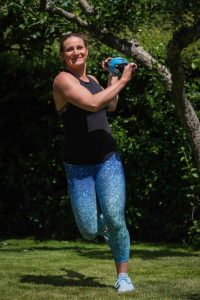
Ally Taylor has been a personal trainer and group exercise instructor for over 21 years and runs a private studio in East Horsley, Surrey. She specialises in training the human being, not just the human body and believes we need more focus on movement for health, rather than just aesthetics. She has also worked in fitness education for over 12 years and has trained over 1000 trainee fitness instructors in that time. You can contact her here.
REFERENCES:
- Wells C, Kolt GS, Marshall P, Hill B, Bialocerkowski A. The effectiveness of Pilates exercise in people with chronic low back pain: a systematic review. PLoS One. 2014 Jul 1;9(7):e100402. doi: 10.1371/journal.pone.0100402. PMID: 24984069; PMCID: PMC4077575.
- Sizer PS Jr, Brismée JM, Cook C. Coupling behavior of the thoracic spine: a systematic review of the literature. J Manipulative Physiol Ther. 2007 Jun;30(5):390-9. doi: 10.1016/j.jmpt.2007.04.009. PMID: 17574958.
- Allegri M, Montella S, Salici F, Valente A, Marchesini M, Compagnone C, Baciarello M, Manferdini ME, Fanelli G. Mechanisms of low back pain: a guide for diagnosis and therapy. F1000Res. 2016 Jun 28;5:F1000 Faculty Rev-1530. doi: 10.12688/f1000research.8105.2. PMID: 27408698; PMCID: PMC4926733.
- Saragiotto BT, Maher CG, Yamato TP, Costa LO, Menezes Costa LC, Ostelo RW, Macedo LG. Motor control exercise for chronic non-specific low-back pain. Cochrane Database Syst Rev. 2016 Jan 8;2016(1):CD012004. doi: 10.1002/14651858.CD012004. PMID: 26742533; PMCID: PMC8761501.
- Yamato TP, Maher CG, Saragiotto BT, Hancock MJ, Ostelo RW, Cabral CM, Menezes Costa LC, Costa LO. Pilates for low back pain. Cochrane Database Syst Rev. 2015 Jul 2;2015(7):CD010265. doi: 10.1002/14651858.CD010265.pub2. PMID: 26133923; PMCID: PMC8078578.
- Kudo, Kazutoshi & Ohtsuki, Tatsuyuki. (2008). Adaptive Variability in Skilled Human Movements. Transactions of The Japanese Society for Artificial Intelligence. 23. 151-162. 10.1527/tjsai.23.151.
- Zügel M, Maganaris CN, Wilke J, et al Fascial tissue research in sports medicine: from molecules to tissue adaptation, injury and diagnostics: consensus statement British Journal of Sports Medicine 2018;52:1497.
- Parreira P, Heymans MW, van Tulder MW, Esmail R, Koes BW, Poquet N, Lin CWC, Maher CG. Back Schools for chronic non-specific low back pain. Cochrane Database of Systematic Reviews 2017, Issue 8. Art. No.: CD011674. DOI: 10.1002/14651858.CD011674.pub2
- Fonseca, R & Roschel, Hamilton & Tricoli, Valmor & De Souza, Eduardo & Wilson, Jacob & Laurentino, Gilberto & Aihara, Andre & Leão, A & Ugrinowitsch, Carlos. (2014). Changes in exercises are more effective than in loading schemes to improve muscle strength.
- Young WB. Transfer of strength and power training to sports performance. Int J Sports Physiol Perform. 2006 Jun;1(2):74-83. doi: 10.1123/ijspp.1.2.74. PMID: 19114741.
- Hayden J, van Tulder MW, Malmivaara A, Koes BW. Exercise therapy for treatment of non-specific low back pain. Cochrane Database of Systematic Reviews 2005, Issue 3. Art. No.: CD000335. DOI: 10.1002/14651858.CD000335.pub2


